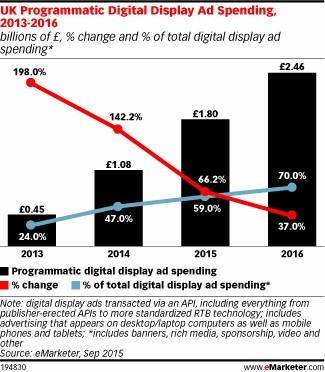I don’t need to tell you that 2016 was a monumental year. But aside from Britain voting to leave the European Union and Trump winning the U.S. presidency, it was also a tremendous year for retail.
2016 saw the most significant Black Friday ever, the depreciation of the pound make the UK an attractive destination for tourist shoppers, and the growth of mobile shopping over desktop skyrocket, as prominent examples.
But what came next for retail, in 2017? And how will digital and tech advancements change the future eCommerce landscape?
Digital Trends That Transformed Retail Sales
The following trends were predicted to shift retail paradigms, and the results were even more extensive than we could have guessed.
Trend #1: The Continued Growth of Mobile

Every year purports to be the year of mobile, and 2017 was no different. Consumers increasingly incorporate mobile into their shopping journey, with Internet Retailer estimating that mobile shopping drove one-third of eCommerce.
This trend continued throughout 2017. Ve Interactive data showed that mobile replaced the desktop in the UK as the preferred method to shop online, accounting for 58.7% of purchases. And according to research by think tank Gartner, mobile commerce was expected to boost eCommerce-driven mobile revenue by at least 50% in 2017.
For these reasons, I expect to see a continued shift in retail businesses prioritizing their mobile offering, with some even exclusively focusing on engaging users via smartphone and tablet tech over a desktop. After all, building an e-commerce app has never been easier.
In 2017, the augmented usage of mobile wallets and development of branded mobile apps continued to rise. Shopping via mobile app became increasingly normalized, while more retailers looked to their apps to gamify the retail experience.
This enormous growth and diversification of mobile capability meant that creating an omnichannel, mobile-optimized shopping experience that tied together instore and online wasn’t just a bonus for retailers, but had to become a priority in 2017. Especially as, according to Google, not having a mobile-optimized website is like closing your store for one day each week.
It shouldn’t surprise you that, as of November 2017, the leading mobile shopping apps in the United States were from Amazon, Walmart, and eBay. So, if you haven’t boarded the mobile retail train yet, you might want to research what these brands are doing to enhance the customer experience.

Most popular mobile shopping apps in the United States as of November 2017, by monthly users (in millions)
Trend #2: The Improved Delivery Technology

In 2016 we saw big brands up their game when it came to delivery, with retailers offering more reliable next day, same day and even within the hour delivery options.
As consumers began to expect better experiences and instant gratification, 2017 gave us more retailers looking to AI solutions, technology, and automation strategies to streamline processes. Think delivery drones, AI couriers, and optimized supply chain methods.
Retailers found creative ways like this to extend a smooth and convenient user experience for their consumers. As an example, Just Eat partnered with Starship Technologies to test slow-moving pavement droids that can travel up to 4 miles per hour for roughly 10 miles to deliver food, using a GPS signal and cameras to navigate and avoid obstacles. When the food arrives at the destination, customers simply input a code. And, Amazon partnered with USPS to offer deliveries on Sunday for the first time in US History.
With the bar set so high by big-box retail, even food delivery systems were transformed. GrubHub and Doordash announced partnerships with NCR Corp, a point of sale provider for restaurants. Uber delivery launched an express meal delivery branch of service. The advancements in food service technology continue.
Trend #3: The Exponential Rise of Programmatic Advertising

Programmatic advertising – or in other words, the crunching of numerous sources of data to present the right ads, at the right time, to the right people – grew dramatically. And the ways it impacted the retail industry are very exciting.
There’s the programmatic TV opportunity, programmatic storytelling, the ability to circumvent ad blocking issues, to truly personalize content for individuals, to move away from last touch attribution… the list continues. (be sure to read this beginner’s guide to programmatic advertising).
In 2017, more and more retailers looked to programmatic as a data-driven solution to better target users and drove more sales. The gap between those that continued to use manual ad purchasing and those that championed programmatic ads became more pronounced.
Mark Abay, Content Director at Ashton Media, predicted that “programmatic is going to drive 100% of advertising trading execution by 2020.” It’s therefore still up to retailers to get with programmatic before it’s too late.
Modern ads are more than just commercials.
If you plan to make the most of your ad spending this year, you need to think outside the box. While basic commercials are no longer your only option, video continues to be one of the most popular forms of promotional media. So, keep the following options on your radar.
- Gamification
- Whiteboard videos
- Explainer videos
- Animations
You don’t need to set up a video recording studio in your home office — these options are more than efficient for video marketing.
Helpful Resources for eCommerce Entrepreneurs
In the past, online store owners had to rely on traditional financing and online education. But, as the industry has expanded, new resources have become available.
- If you need help with financing, learn about the best loans for eCommerce entrepreneurs. You may also want to compare the pros and cons of business and personal loans.
- To stay up-to-date with the latest tactics and meet other leaders in your industry, check out these eCommerce conferences worth attending in 2018.
- If you prefer convenient digital interactions, try joining the world’s largest online eCommerce networking group.
- If you have ever considered selling our own branded custom merchandise, don’t be afraid to do jump right in, there hasn’t been a better moment. The Shopify app Kite is risk-free. Kite offers a wide range of custom merchandise with free drop shipping, and there is no requirement to purchase or store any merchandise yourself.
Where will you be next year?
We are undoubtedly living in the digital age, with technology and consumer shopping behavior evolving rapidly as a result. So it’s imperative that retailers don’t just keep up with technology and consumer expectations, but try to pre-empt them and stay one step ahead.
For the retail brands that stay on top of the most prominent trends like the three I’ve explored above, it could be an exciting year. For those that fail to keep up and optimize their mobile, delivery and programmatic strategies, however, they might just be left behind.
This post was originally published on March 7, 2017, and has since been updated by the staff at Heroic Search.

Comments: